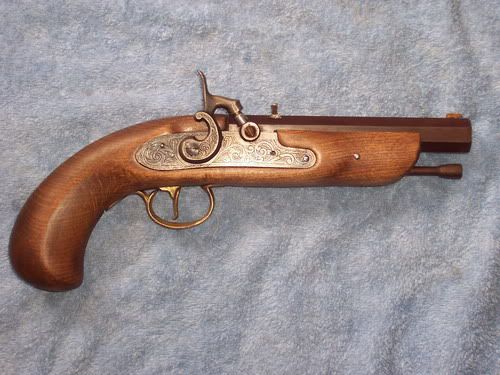One old gun I worked on several years ago was a 1863 Springfield musket that hadn't been touched in years and was dry as a bone with a frozen rear adjustable sight and a lot of light rust.The heel of the butt piece had some deep pitting but otherwise the rust was on the surface.I disassembled the gun and cleaned it with warm water and Dove detergent applied with a soft rag to remove the surface grime.I worked on the steel components including the rear sight with reconstituted lemon juice {Krogers}and steel wool.I don't remember the grade but it was probably 000 and then 0000.At any rate the rust came off and I unfroze the sight.I couldn't do anything about the deep pitting on the butt piece heel so I just left it alone.Lemon juice is great for surface rust and doesn't affect patina,I carry it to reenactments to take care of morning after rust on my gun.
As to the wood I use a furniture polish that I make using an old fashioned recipe:boiled linseed oil,turpentine,and vinegar in equal parts.I used this on the Springfield applying several coats.The first few coats I just let soak in for a few days per coat then hand rubbed after several more.Boiled linseed oil used straight takes forever to dry but somehow the other ingredients speed the drying process.I know this is basically a polish but it works well in bringing out the patina on old dried wood.I would caution that when using this polish or boiled linseed oil in general on maple,especially the curly variety or any tightly pored wood be careful not to spread it on as thick as you would on walnut which is open pored.I did ONCE and had a time getting it off a curly maple stock after it gummed up.
I cannot stress too highly the beneficial affect of hand rubbing.I have a Fusil fin Ca.1720's which came out of a barn,was purchased by a picker,and then sold by an antique dealer all with NO cleaning or restoration.I cleaned the gun as above and began hand rubbing with some nose grease thrown in around the tang and a couple of other places.The gun had been converted to percussion.The reconversion to flintlock was done by an expert blacksmith who reassembled and fitted an old flintlock with some shaving to fit the lock mortice{with NO wood removal},some correct bolts, a little linen repair inside the barrel channel to cure a crack on one side of the forestock and some mior straightening of the butt piece thus completing the stabilization of the gun which now looks as it would have during it's period of usage as a flintlock prior to a percussion conversion in about the 1730's but with a flintlock replaced during the period of its use as a flintlock arm.I might add that I haven't used any polish {other than some nose grease} on this particular gun but have confined myself to hand rubbing because of its long history of usage and a pretty good patina under the dirt.Sorry to ramble on so long but thought this would be interesting on this thread.
I like the look of the pistol here and I would continue to hand rub the gun and perhaps you might try my "old" polish with still more hand rubbing in between applications.
Good luck
Tom Patton






